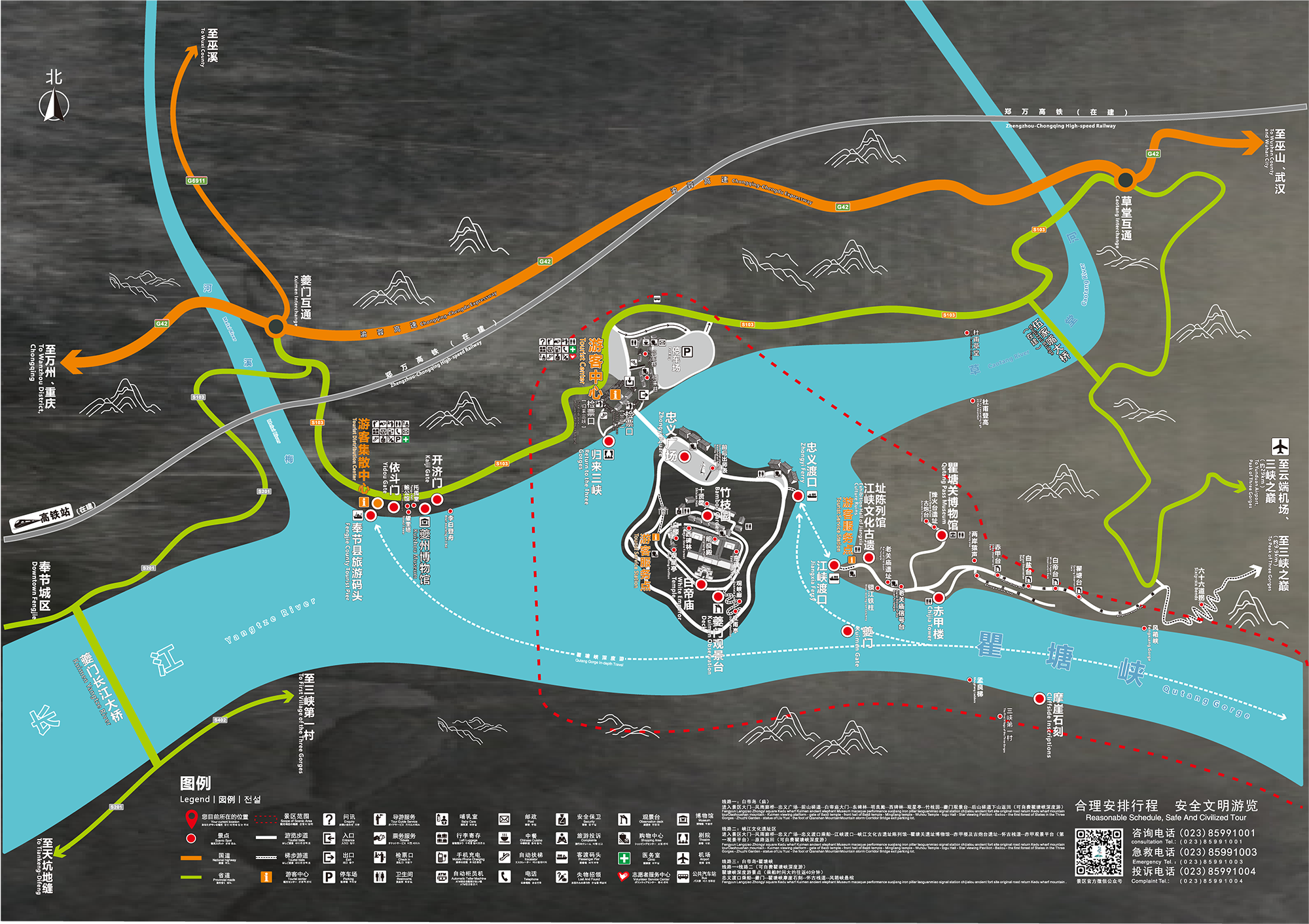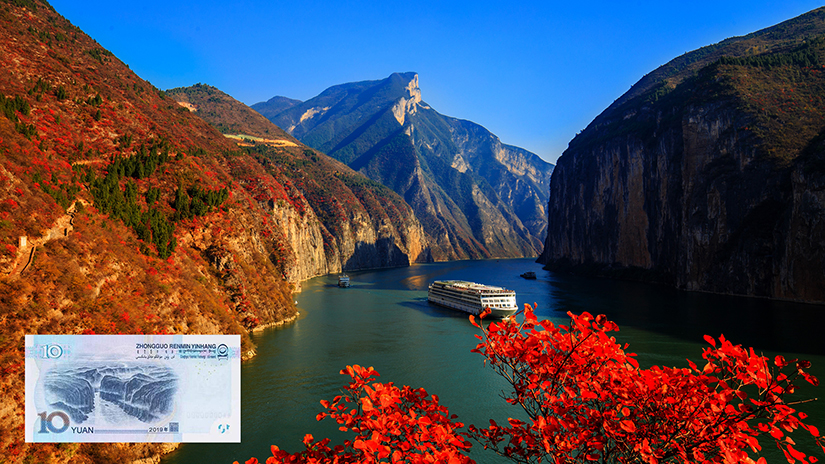Scenic spots
Baidi City · Qutang Gorge Scenic Area is located in Fengjie County, Chongqing City, Qutang Gorge mouth on the north bank of the Yangtze River Baidi Mountain, is located in the west entrance of the Yangtze Three Gorges, facing Kuimen in the east, Baiyan Mountain across the river in the south, Fengjie County in the west, Jigong Mountain in the north, more than 10 kilometers from the east of Fengjie County. Scenic spot to create area of 4.7 square kilometers (east to filled, qu tong village, west to GuanMiao Tuo, south by fengjie, wushan county line, north a manufactory), mainly by two big treasure, qutang gorge scenic area, numerous scenic spots and historical sites, is a combination of nature and humanities, poetry, and fire, the starting point is to get a good view of the Yangtze river three gorges magnificent beauty. In 1978, the Baidi City Scenic Area was officially opened to the outside world, and it was one of the first scenic spots to be opened to the outside world in China.
Baidi City, formerly known as Ziyang City, was built by Gongsun Shu in the late Western Han Dynasty, and was renamed Baidi City in 25 AD as the self-proclaimed Baidi Emperor. In 36 AD, the Temple of the White Emperor was built on Mount Baidi to offer sacrifices to Gongsun Shu. Ming Jiajing twelve years (AD 1533), the temple to change the worship of Liu Bei, Zhuge Liang. In the Tang and Song dynasties, Li Bai, Du Fu, Bai Juyi, Liu Yuxi and other literati traveled, lived in or served as officials, leaving behind a large number of immortal poems, hence the reputation of "Poetry City". After the impoundment of the Three Gorges Project, the water level was raised to 175 meters, and the Baidi City surrounded by water has become a "green island" in the "high gorge and flat lake".
Qutang Gorge is close to the Baidi City, with a total length of 8 kilometers. It is the shortest, narrowest and most dangerous section of the gorge in the Three Gorges, with a combination of grandeur, strangeness, danger and precipitousness. On the Chijia Mountain on the north bank of Qutang Gorge, there are three sites: Laoguan Temple Cultural Relics, Daxi Cultural Relics and Wushan Ape Man Relics, as well as scenic spots such as Lao Guan Temple Signal Station, Chijia Tower, ancient fort, ancient trestle road, and Bellow Gorge Hanging Coffin. The Baiyan Mountain on the south bank has the ruins of the ancient plank road of Mengliang ladder, the stone carvings of the cliff, the peak of the rhinoceros watching the moon and the peak of the ape man, which condenses the human development history of 2 million years in China.
Located in the west of Qutang Gorge, Kuimen, also known as Qutang Pass, is one of the most powerful scenery in the world. It holds Bashu in the west and Jingchu in the east, and has been a disputed place for war masters since ancient times. River two mountain confrontation, steep cliff, axe cutting, straight up and down, in the Great River, Yan e tower; Days open a line, a gorge zhang, a river valley lock, this is Kui door. Kuimen, famous for its magnificence, was renowned as "the master of Kuimen in the world" in ancient times, and now enjoys the reputation of "the gate of Chinese mountains and rivers". It is the fifth set of 10 RMB background pattern.







